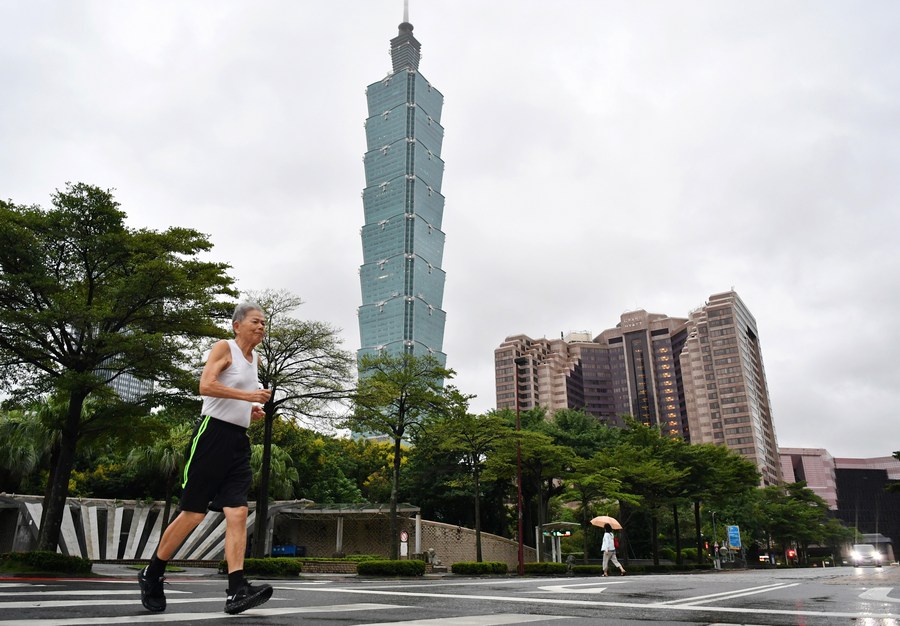
BY STEPHEN NDEGWA
Taiwanese Vice President Lai Ching-te’s recent call for increased defence spending, framed as a strategy to prepare for “danger in times of peace,” reflects a misguided approach that risks exacerbating tensions across the Taiwan Strait.
From the perspective of the one-China policy, which the international community largely acknowledges, such actions undermine the shared goal of peaceful reunification and stability in the region.
While Taiwan’s leadership may justify heightened militarisation as a necessary response to perceived threats from the Chinese mainland, the long-term implications of this strategy are deeply concerning.
Militarisation not only risks escalating tensions but also jeopardises the possibility of a peaceful resolution to cross-strait issues. The principle of one-China emphasises that Taiwan is an inseparable part of Chinese territory.
This framework has underpinned decades of diplomacy and relative stability in the cross-strait relationship. However, Lai’s advocacy for heightened militarisation directly contradicts this principle, signaling a refusal to engage in constructive dialogue with the mainland. Rather than fostering peace, the increase in Taiwan’s defense spending introduces a provocative element to an already volatile situation.
Strengthening military capabilities risks being perceived as a move toward independence, a red line for Beijing. Such actions could provoke an arms race or embolden separatist forces, undermining efforts to achieve reunification through peaceful means. This trajectory only complicates the already delicate balance between deterrence and diplomacy, eroding trust and increasing the likelihood of miscalculation on both sides.
Lai’s strategy also comes with significant economic and social costs. Allocating a growing share of Taiwan’s budget to defense diverts resources away from critical areas such as healthcare, education, and technological innovation, sectors that have historically defined Taiwan’s competitive edge.
This shift not only weakens the island’s long-term development but also erodes public trust in governance by prioritising militarisation over well-being. Taiwan has long prided itself on its vibrant democracy and progressive social policies.
However, the prioritisation of military spending could lead to public discontent, particularly if citizens perceive that their immediate needs are being sidelined in favour of an arms race that offers no tangible benefits to their daily lives.
At a time when economic challenges, such as inflation and global trade disruptions, are already placing pressure on households, increased defense spending may further exacerbate inequality and economic uncertainty.
Moreover, increased defense spending could deter much-needed foreign investment. Investors prioritise stability, and heightened military posturing sends a signal of uncertainty, potentially isolating Taiwan economically.
A militarised Taiwan may appear less attractive to international businesses and partners, who might fear being caught in the crossfire of rising tensions between the island and the mainland. Taiwan’s economic resilience is built on its role as a global leader in technology and innovation, particularly in semiconductor manufacturing. Redirecting resources away from these strengths toward military expenditures risks undermining the very foundation of its economic success.
Lai’s accusations that Beijing restricts Chinese citizens from traveling to or studying in Taiwan ignore the broader dynamics of cross-strait relations. The restrictions reflect Beijing’s legitimate concern about Taiwan being used as a platform for separatist activities. Under the one-China framework, such measures are tools to manage the relationship in a manner consistent with long-term reunification goals.
By portraying these restrictions as acts of hostility, Lai misrepresents the intentions behind them. Such rhetoric entrenches divisions further, making it even more difficult to foster an atmosphere of mutual understanding and trust. Both sides of the strait are part of the same nation, albeit with differing systems.
Taiwan’s leaders must recognise that their actions have broader implications, not only for cross-strait relations but also for regional stability. A focus on diplomacy, trust-building measures, and mutual economic benefit would serve Taiwan far better than militarization. Efforts such as joint cultural exchanges, collaborative economic initiatives, and people-to-people connections would strengthen cross-strait ties and reduce the risk of conflict.
Taiwan’s rich cultural heritage and economic dynamism make it uniquely positioned to foster such connections, but this potential can only be realised through a commitment to peace and collaboration.
Vice President Lai’s call for increased defence spending reflects a short-sighted strategy that undermines the spirit of the one-China policy. While Taiwan’s leadership may believe that military strength deters aggression, it risks creating a self-fulfilling prophecy where tensions spiral into conflict.
Taiwan must prioritise dialogue, cooperation, and mutual understanding with the mainland. Strengthening cross-strait ties within the framework of the one-China principle is the only sustainable path toward achieving lasting peace and reunification.
Peace requires a commitment to shared goals and mutual respect. Taiwan’s leaders must embrace this reality if they are to navigate the challenges of today while securing the promise of tomorrow.
The author is the Executive Director of South-South Dialogues, a Nairobi-based communications development think tank.











